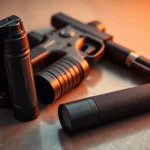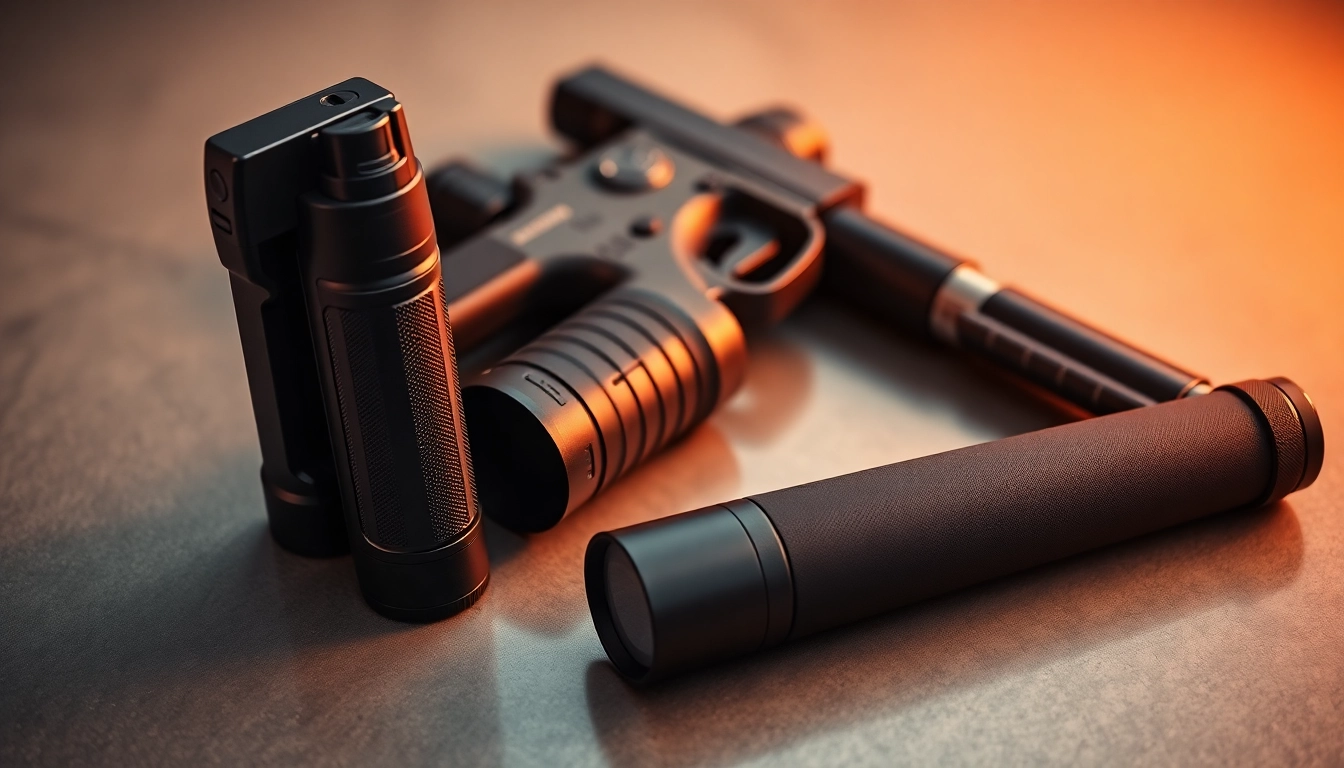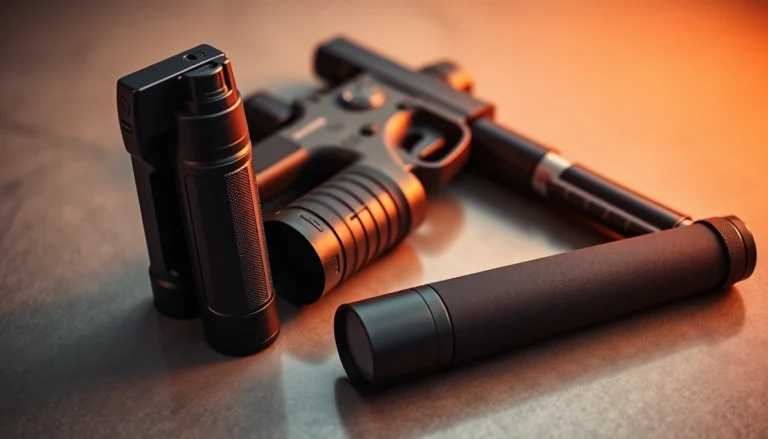Comprehensive Guide to Self-Defense Weapons: Types, Legalities, and Selection Strategies
In an era where personal safety is increasingly prioritized, understanding the arsenal of self-defense weapons available and their legal implications is crucial. Whether you’re seeking peace of mind during daily commutes, enhancing home security, or preparing for outdoor adventures, selecting the right self-defense tools can be transformative. This comprehensive guide explores the myriad of self-defense weapons, their legal considerations across various jurisdictions, and practical strategies to choose and use the most effective options for your needs. To begin, it’s essential to familiarize yourself with the broad categories of self-defense weapons and the legal landscape governing their use.
For an in-depth exploration of available tools, visit our dedicated section on Self-Defense Weapons, which provides detailed reviews, safety tips, and product recommendations tailored to your safety preferences.
Understanding Self-Defense Weapons: Types and Legalities
Common Non-Lethal Self-Defense Weapons
Non-lethal self-defense weapons are designed to incapacitate an attacker without causing permanent injury, making them attractive options for a wide range of users. These tools focus on temporarily disabling an assailant or creating a distraction, allowing you to escape a dangerous situation. Here are some of the most popular non-lethal options:
- Pepper Spray: One of the most widely used self-defense tools, pepper spray causes temporary blindness, difficulty breathing, and intense irritation of the eyes and skin. It’s compact, easy to carry, and legal in most places, provided you adhere to local regulations.
- Stun Guns and Tasers: These devices deliver an electric shock that incapacitates an attacker temporarily. Modern stun guns often come with features like LED flashlights, making them versatile for various scenarios.
- Personal Alarms: Designed to emit a loud, attention-grabbing noise, personal alarms can startle an attacker and alert others nearby, creating a wider safety net.
- Self-Defense Keychain Weapons: Small and discreet, these include tactical pens, kubotans, or mini tactical knives concealed within keychains, offering quick access when needed.
Legal Considerations for Self-Defense Weapons
The legality of self-defense weapons varies significantly across jurisdictions. While some devices like pepper spray and personal alarms are universally legal, others such as stun guns, knives, or expandable batons are subject to local regulations. It’s critical to research your state and local laws before purchasing or carrying any self-defense weapon.
Most regulations aim to prevent misuse and restrict certain items in specific settings—such as schools or public transport. Some regions require permits, registration, or have size and power limitations for certain devices. Failure to comply can result in legal penalties, including fines or criminal charges. Therefore, always verify current laws through official government resources or consult legal experts to ensure your self-defense tools are within legal boundaries.
Understanding the legal framework not only ensures compliance but also helps you select the most effective and permissible devices suited to your safety needs.
State-by-State Regulations and Restrictions
The U.S. presents a complex landscape regarding self-defense weapon legality, with significant differences from state to state. Here are some key insights into state-specific regulations:
States with Permissive Laws
States like Texas, Florida, and Arizona typically have less restrictive laws concerning pepper spray, stun guns, and certain knives. Citizens often enjoy broader rights to carry and use self-defense tools without extensive permits, provided they meet size and usage criteria.
States with Restrictions or Bans
California, New York, and Illinois, among others, impose restrictions or bans on several self-defense weapons. For example, stun guns might require permits, certain knives (like switchblades) are prohibited, and some areas restrict carrying concealed weapons without special licenses.
Implications for Carriers
Before carrying any self-defense weapon, verify whether your state classifies it as legal, restricted, or illegal. Some states consider it a criminal offense to carry an item for self-defense that exceeds certain size limits or is categorized as a weapon under local law. Moreover, some municipalities have their own ordinances that impose additional restrictions.
To navigate these complexities, consult official resources such as state police websites, legal advisories, or community safety organizations. Ensuring compliance prevents legal challenges and enhances your safety planning.
Choosing the Right Self-Defense Weapon for Your Needs
Factors to Consider: Portability, Ease of Use, Effectiveness
Selecting an appropriate self-defense weapon involves assessing practical factors tailored to your lifestyle and comfort level. Here are critical considerations:
- Portability: Is the device lightweight and compact enough to carry discreetly? For daily commuters or joggers, small and unobtrusive tools like pepper spray or self-defense keychains are ideal.
- Ease of Use: Can you operate the weapon quickly under stress? Simple activation mechanisms, such as a thumb press or quick draw, are essential for rapid response.
- Effectiveness: Will the weapon incapacitate an attacker long enough for you to escape? Non-lethal options should provide reliable deterrence without requiring excessive training or effort.
Self-Defense Weapons for Women and Men
While most self-defense tools are suitable for all genders, some products are designed with specific needs in mind. Women often prefer discreet, stylish devices like pepper spray keychains or compact stun guns that can be carried in handbags or pockets. Men might opt for larger batons or expandable weapons for increased reach and strength.
Specialized Options for Seniors and Kids
Seniors may benefit from easy-to-use devices like lightweight canes with hidden self-defense features or personal alarms. For children, safety tools like whistle-based alarms or wearable GPS trackers with alarm functions are advisable. The key is to balance safety with simplicity and non-threatening appearance to ensure comfort and compliance.
Training and Safety Tips for Using Self-Defense Weapons
Proper Handling and Storage
Correct handling and secure storage are vital to maximize your self-defense weapon’s effectiveness and ensure safety in everyday life. Always read manufacturer instructions thoroughly. Store weapons in accessible yet secure locations—preferably in a designated safe or compartment known only to you. Regular practice with your devices ensures familiarity and swift activation when needed.
Self-Defense Skills and Training Programs
Self-defense extends beyond possessing weapons; developing situational awareness and tactical skills significantly enhances personal safety. Enroll in professional training programs that teach de-escalation, assault prevention, and effective use of your chosen tools. Many organizations offer courses tailored for different age groups, genders, and physical abilities. Practicing scenario-based drills builds confidence and readiness.
Emergency Response and When to Use Your Weapon
Understanding the appropriate moment to deploy your self-defense weapon is crucial. Use your device only when faced with an imminent threat or assault where you cannot escape. Recognize warning signs of danger, maintain awareness of your surroundings, and trust your judgment. Remember, the primary goal is to create enough distraction or incapacitation to facilitate a safe escape rather than confrontation.
Popular Self-Defense Weapons on the Market
Top Non-Lethal Self-Defense Devices
Market options are continually evolving, with innovative designs that combine efficacy, discretion, and ease of use. Notable devices include:
- Byrna SD Pepper Shotgun: a non-lethal shotgun that fires pepper-filled rounds, effective at distances up to 60 feet.
- Stun Gun Flashlights: dual-function devices providing both illumination and incapacitation capabilities.
- Miniature Tasers: compact, easy to carry, and effective for close-range defense.
Innovative and Discreet Weapons
Discretion and stealth are key for many users. Examples include disguised pens, lipstick tasers, and jewelry-like pepper spray. These items blend seamlessly into daily accessories, ensuring you’re never unarmed while maintaining a low profile.
Comparative Benefits of Different Weapons
Choosing between options depends on your specific needs:
| Weapon Type | Pros | Cons | Best For |
|---|---|---|---|
| Pepper Spray | Easy to carry, legal in many areas, effective at disabling attackers temporarily | Requires aiming, wind can affect dispersion | Everyday carry, outdoor activities |
| Stun Gun | Immediate incapacitation, useful in close encounters | Limited range, needs physical contact | Personal protection in familiar settings |
| Personal Alarm | Discreet, easy to activate, loud deterrent | No incapacitation effect, depends on bystanders | Universal safety tool for all demographics |
Maximizing Your Personal Safety with Self-Defense Weapons
Practical Tips for Carrying and Accessing Your Weapon
Effective self-defense relies on quick access and constant readiness. Use holsters, keychain attachments, or discreet pouches that facilitate rapid deployment. Regularly check your equipment to ensure functionality, and familiarize yourself with how to activate it confidently under stress.
Enhancing Situational Awareness
Stay vigilant by minimizing distractions and observing your surroundings. Trust your instincts—if something feels off, take preventive measures such as altering your route or seeking populated areas. Increasing situational awareness significantly reduces vulnerability and prepares you to respond swiftly if needed.
Combining Weapons with Personal Alarms and Other Tools
Maximize safety by integrating multiple tools—carry a stun gun alongside a personal alarm, for example. This layered approach ensures that if one tool fails or is unusable, others can still provide protection. Practice using the devices together to develop muscle memory for real-life scenarios.




















